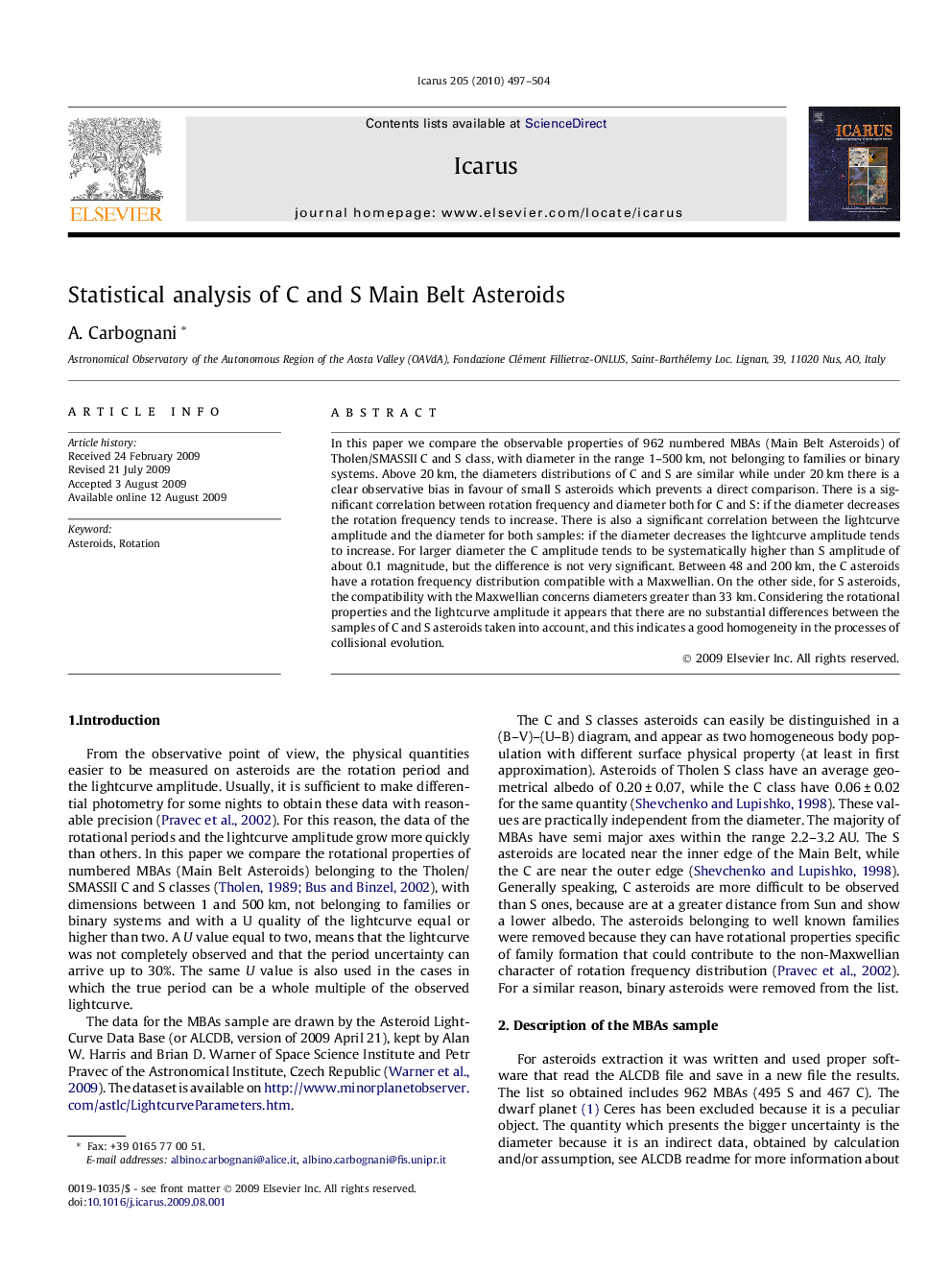| Article ID | Journal | Published Year | Pages | File Type |
|---|---|---|---|---|
| 1774234 | Icarus | 2010 | 8 Pages |
Abstract
In this paper we compare the observable properties of 962 numbered MBAs (Main Belt Asteroids) of Tholen/SMASSII C and S class, with diameter in the range 1-500Â km, not belonging to families or binary systems. Above 20Â km, the diameters distributions of C and S are similar while under 20Â km there is a clear observative bias in favour of small S asteroids which prevents a direct comparison. There is a significant correlation between rotation frequency and diameter both for C and S: if the diameter decreases the rotation frequency tends to increase. There is also a significant correlation between the lightcurve amplitude and the diameter for both samples: if the diameter decreases the lightcurve amplitude tends to increase. For larger diameter the C amplitude tends to be systematically higher than S amplitude of about 0.1 magnitude, but the difference is not very significant. Between 48 and 200Â km, the C asteroids have a rotation frequency distribution compatible with a Maxwellian. On the other side, for S asteroids, the compatibility with the Maxwellian concerns diameters greater than 33Â km. Considering the rotational properties and the lightcurve amplitude it appears that there are no substantial differences between the samples of C and S asteroids taken into account, and this indicates a good homogeneity in the processes of collisional evolution.
Related Topics
Physical Sciences and Engineering
Earth and Planetary Sciences
Space and Planetary Science
Authors
A. Carbognani,
